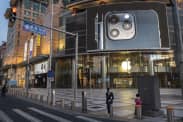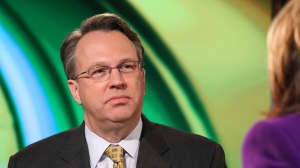Federal Reserve Chair Jerome Powell on Friday said the central bank remains unsure of whether more interest rate hikes are needed.
In a speech kicking off the Jackson Hole retreat, Powell promised that the central bank will move carefully given “cloudy” economic outlook and said the central bank would assess the incoming data.
“Based on this assessment, we will proceed carefully as we decide whether to
tighten further or, instead, to hold the policy rate constant and await further data,” Powell said.
In his remarks, Powell repeated his firm intention to get inflation back to the 2% target. He rejected calls to raise the Fed’s 2% target and took no victory lap for the recent benign inflation readings, saying it was just the beginning of what was needed.
Powell said inflation remained “too high,” he said. The Fed “will keep at it until the job is done.”
“We are prepared to raise rates further if appropriate, and intend to hold policy at a restrictive level until we are confident that inflation is moving sustainably down toward our objective,” Powell said at the beginning of his remarks.
Powell said that, getting inflation back to 2%, “is expected to require a period of below-trend economic growth as well as some softening in labor market conditions.”
Many analysts think that economic growth could be reaccelerating in the third quarter and this could change the Fed’s view that it is near the peak level of interest rates.
Powell said the Fed was “attentive” to these signs to signs.
“Additional evidence of persistently above-trend growth could put further progress on inflation at risk and could warrant further tightening of monetary policy,” Powell said,
In a similar vein, Powell said that the labor market was beginning to soften but that rate hikes might be needed if the labor market strengthened.
“Evidence that the tightness in the labor market is no longer easing could also call for a monetary policy response,” he said.
But there were factors slowing growth, he said.
The recent rise in long-term bond yields BX:TMUBMUSD10Y, along with more stringent bank lending standards, had contributed to tighter financial conditions.
“This tightening typically contributes to a slowing in the growth of economic activity, and there is evidence of that in this cycle as well,” Powell said.
In another nod to the doves, Powell said that the economy may not have felt the full effect yet of the Fed’s rapid monetary tightening over the past year and a half.
“The wide range of estimates of these lags suggests that there may be significant further drag in the pipeline,” he said.
Fed officials who want the Fed to raise rates more this year generally think that the effects from past rate hikes have already hit the economy.
In June, Fed officials penciled in one more rate hike this year. The Fed’s benchmark rate is now in a range of 5.25%-5.5%. There are three policy meetings left in 2023.
Powell said the Fed thinks that interest rates are now “restrictive,” or pushing down inflation, but it is harder to know if policy is restrictive enough to return inflation to the 2% target, he said.
The cloudy skies “complicate our task of balancing the risk of tightening monetary policy too much against the risk of tightening too little,” Powell said.
In reaction to Powell’s speech, Adam Posen, president of the Peterson Institute, said, “People should be taking it as more hawkish than they are.”
Powell was very clear he was sticking to the 2% inflation target and “it was very clear that we are going to be higher for longer,” he said, in an interview on the sidelines of the conference.
Josh Shapiro, chief U.S. economist at MRF Inc. said in a research note that “the bottom line is that policy decisions remain seat of the pants relying largely on economic data that is either backward looking or questionable in terms of its true meaning.”
“We would caution against any smugness about the inflation fight being won with a minimum of collateral damage. These are early days in the process and there is still plenty that could go wrong,” he added.







